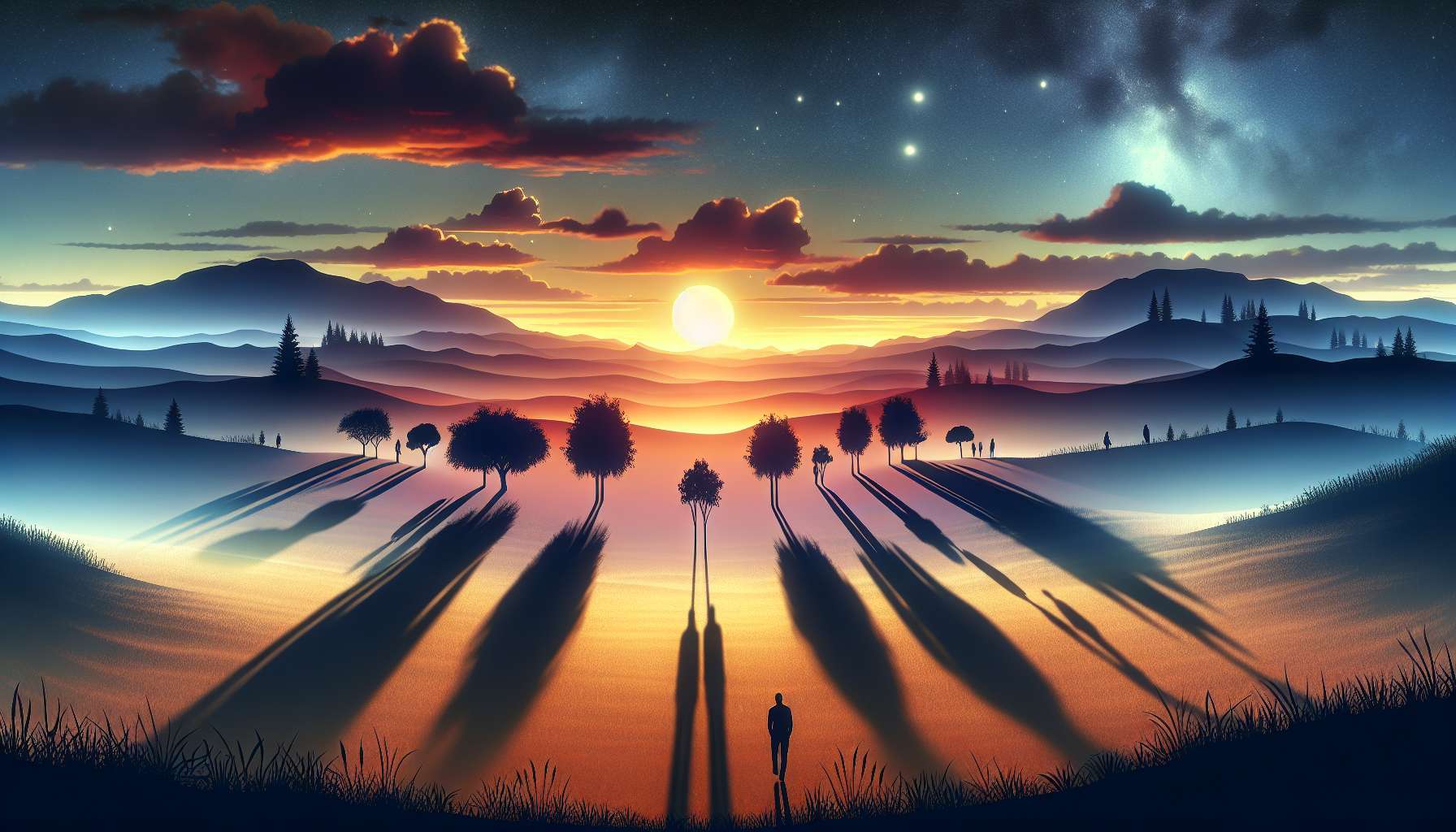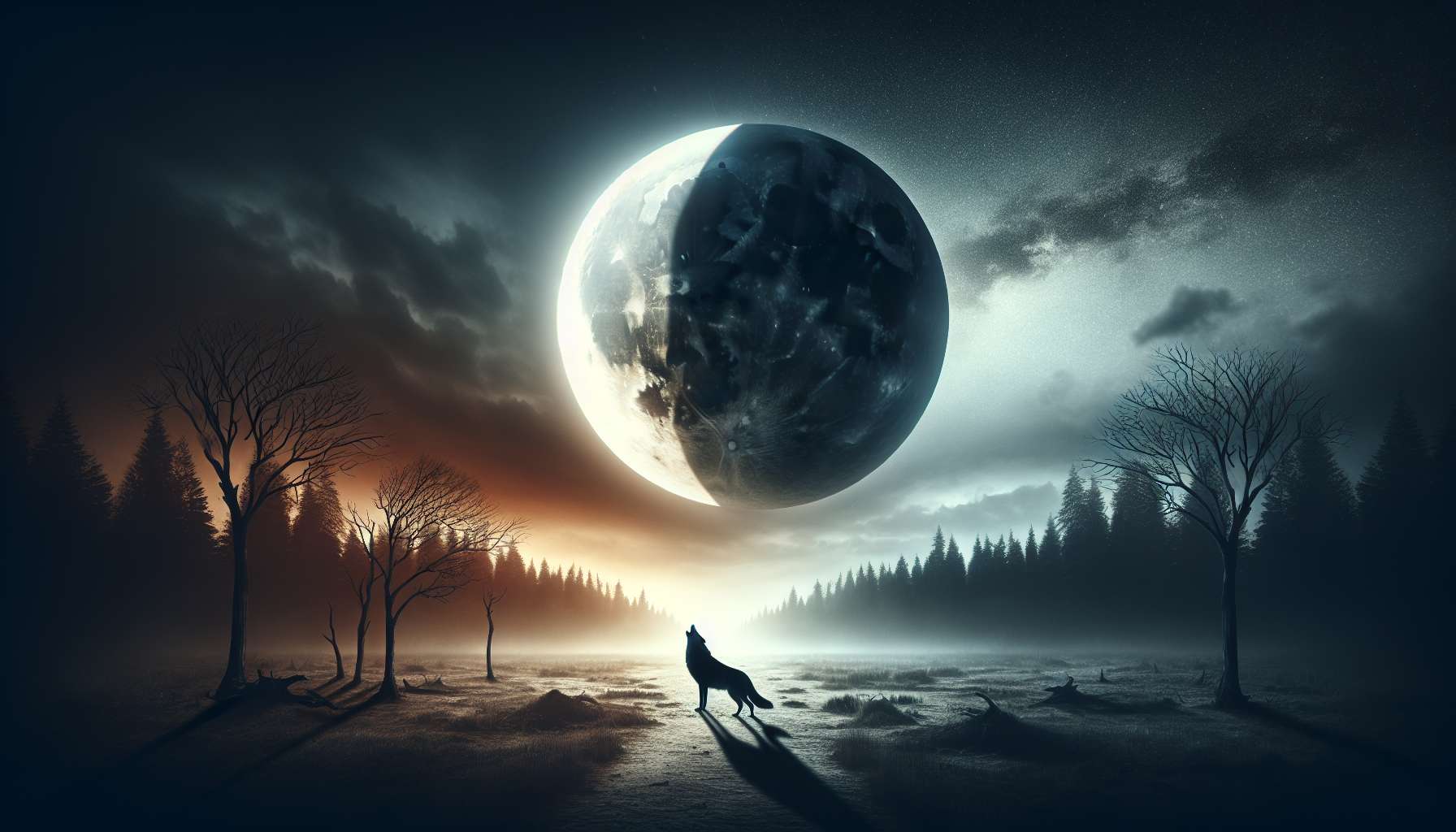Exploring the Enigmatic World of Shadowplay at Twilight
As the sun dips below the horizon and the world is cloaked in the mystical hues of twilight, a fascinating phenomenon unfolds – shadowplay at twilight. This captivating interplay of light and shadows has intrigued artists, photographers, and nature enthusiasts for centuries. From the mesmerizing silhouettes cast by towering trees against a twilight sky to the intricate patterns created by urban structures in the fading light, shadowplay at twilight offers a unique and ephemeral spectacle that never fails to mesmerize.
In this comprehensive guide, we delve into the enchanting world of shadowplay at twilight, exploring its origins, cultural significance, and the myriad ways it inspires and influences our lives. Join us on a journey through the shadows as we unravel the mysteries of this mesmerizing natural phenomenon.
The Magic of Twilight
Twilight, the magical time between day and night, has long been a source of fascination for poets, painters, and dreamers. The soft, diffused light of twilight creates a dreamy atmosphere that is ideal for capturing the beauty of nature and the world around us. It is during this fleeting moment that shadowplay at twilight comes to life, transforming ordinary objects into extraordinary works of art.
Whether you’re strolling through a park at dusk or gazing out at the city skyline as night falls, the play of light and shadows at twilight can evoke a sense of wonder and awe. The subtle shifts in color and contrast at this time of day create a mesmerizing canvas for photographers, artists, and anyone who appreciates the beauty of the natural world.
The Science Behind Shadowplay
At its core, shadowplay at twilight is a result of the interaction between light sources, objects, and the surrounding environment. As the sun sets and light becomes more diffused, shadows begin to lengthen and deepen, creating striking patterns and shapes that dance across the landscape.
One of the key factors that influence shadowplay at twilight is the angle of the sun relative to the horizon. As the sun moves lower in the sky, its light must pass through a thicker layer of Earth’s atmosphere, scattering shorter wavelengths of light such as blue and violet. This scattering effect is what gives twilight its characteristic colors of orange, pink, and purple, and creates a soft, warm light that is ideal for capturing shadows.
Additionally, the type of surface on which shadows are cast can also impact the quality and appearance of shadowplay at twilight. Smooth, reflective surfaces like water or glass can create crisp, well-defined shadows, while rough or textured surfaces can produce more intricate and abstract shadow patterns.
The Artistic Appeal of Shadowplay
For artists and photographers, shadowplay at twilight presents a wealth of creative opportunities. The interplay of light and shadows can add depth, drama, and emotion to a scene, transforming a mundane subject into a masterpiece. From the stark silhouettes of trees against a colorful sky to the intricate patterns cast by architectural details, shadowplay at twilight offers endless possibilities for artistic expression.
One notable example of shadowplay at twilight in art is the work of renowned photographer Ansel Adams. Adams was a master at capturing the beauty of the natural world, using light and shadow to create stunning black-and-white images that have become iconic. His famous photograph “Moonrise, Hernandez, New Mexico” is a prime example of how shadowplay at twilight can elevate a scene to a work of art.
The Cultural Significance of Shadowplay
Throughout history, shadowplay has held a special place in various cultures around the world. From ancient myths and folklore to modern art and entertainment, shadows have been used to convey meaning, evoke emotion, and tell stories in a unique and captivating way.
In many cultures, shadows are seen as symbols of the soul or the subconscious mind, representing hidden truths and unspoken desires. In literature and art, shadows are often used to create a sense of mystery, suspense, or ambiguity, adding depth and complexity to the narrative. Shadowplay at twilight, with its evocative blend of light and darkness, can evoke a wide range of emotions and interpretations, making it a powerful tool for storytelling and creative expression.
Shadowplay in Modern Society
Today, shadowplay at twilight continues to captivate and inspire people from all walks of life. From the world of fashion and design to the realms of architecture and urban planning, shadows are being used in innovative and creative ways to enhance our daily experiences and interactions with the built environment.
One fascinating example of shadowplay in modern society is the use of shadow art in advertising and marketing. By cleverly manipulating light and shadow, advertisers can create eye-catching displays that capture the attention of passersby and communicate a brand’s message in a memorable and engaging way. From shadow projections on buildings to interactive shadow installations in public spaces, shadowplay at twilight has become a powerful tool for creating impact and generating buzz.
The Future of Shadowplay
As we look to the future, the possibilities for shadowplay at twilight are endless. With advances in technology and creative thinking, we can expect to see even more innovative uses of shadows in art, design, and entertainment. Whether it’s through interactive light installations, immersive shadow experiences, or cutting-edge digital art, shadowplay at twilight is poised to continue captivating and inspiring audiences around the world.
By embracing the beauty and magic of shadowplay at twilight, we can unlock new realms of creativity, imagination, and wonder. So next time you find yourself bathed in the soft, ethereal light of twilight, take a moment to appreciate the mesmerizing dance of shadows that unfolds before your eyes. You may just discover a whole new world of beauty and inspiration waiting to be explored.
Expert Opinions
We had the opportunity to speak with renowned photographer and shadowplay enthusiast, Sarah Jones, about the allure of shadowplay at twilight. According to Sarah, “There’s something truly magical about the way light and shadows interact at twilight. The play of colors, shapes, and textures creates a mesmerizing visual symphony that never fails to inspire me. As a photographer, capturing the beauty of shadowplay at twilight is a constant source of joy and creativity.”
Common Misconceptions
One common misconception about shadowplay at twilight is that it is limited to natural settings such as forests, mountains, or seascapes. In reality, shadowplay can be found in urban environments as well, where the interplay of artificial light sources and architectural features can create striking shadow patterns and silhouettes. By expanding our definition of shadowplay, we can discover new and unexpected sources of beauty and inspiration in our everyday surroundings.
Conclusion
To wrap things up, shadowplay at twilight is a mesmerizing natural phenomenon that has captivated artists, photographers, and nature enthusiasts for centuries. The interplay of light and shadows at twilight creates a magical canvas for creativity and expression, offering endless possibilities for artistic exploration and inspiration. By embracing the beauty of shadowplay at twilight, we can unlock new realms of imagination and wonder, enriching our lives and experiences in profound and meaningful ways.
So next time you find yourself basking in the soft, ethereal light of twilight, take a moment to appreciate the enchanting dance of shadows that surrounds you. You may just discover a whole new world of beauty and magic waiting to be explored.




